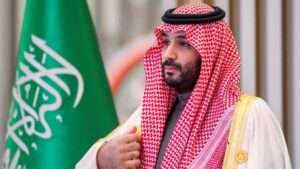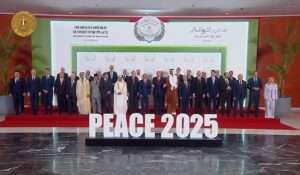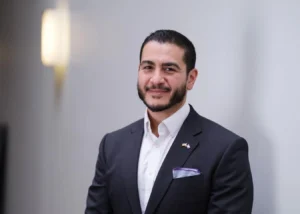By Maria Maalouf
While the world watched D.C. and wounders what the outcomes will be it is important to know where the WORLD stands from an American Strategic Global look. This is where we are today?
Strategic Fault Lines and Fragile Peace
Economic and Demographic Undercurrents Shaping the DC Negotiations
Prelude: The DC Peace Talks—Diplomacy at the Edge of Systemic Collapse
In August 2025, Washington, D.C. became the epicenter of a global recalibration. Delegations from five fractured regions—Russia and Ukraine, Armenia and Azerbaijan, and the South Pacific—convened not to celebrate peace, but to negotiate its possibility.
The mood was transactional, tense, and deeply strategic. Each delegation arrived with its own calculus: territorial claims, energy corridors, demographic survival, and economic lifelines. For U.S. negotiators, the challenge was not merely to broker ceasefires, but to embed American influence into the post-conflict DNA of these regions—through infrastructure, trade, and financial architecture.
Treasury officials played a quiet but decisive role. They mapped sanctions architecture, calibrated aid packages, and evaluated strategic ROI across theaters. Their goal: to ensure that every dollar deployed in the name of diplomacy yielded geopolitical dividends. Peace, in their view, was not a handshake—it was a portfolio.
The DC talks did not resolve the world’s crises. But they revealed a new doctrine: that economic statecraft, demographic foresight, and infrastructure diplomacy are now the primary instruments of global influence. In this fragile moment, Washington is not just negotiating peace—it is designing the scaffolding of a post-conflict order.
I. Russia and Ukraine: Attrition, Asymmetry, and the Cost of Peace
Strategic Landscape
Russia’s war economy has adapted to sanctions through energy re-routing, ruble insulation, and Eurasian trade corridors. Yet its fiscal health is deteriorating:
• Budget deficit projected at 3.5% of GDP in 2025, driven by defense spending and social subsidies.
• Capital flight exceeds $250 billion since 2022, with elite wealth shifting to Dubai, Yerevan, and Beijing.
• Energy exports remain Russia’s lifeline—$300B in 2024 revenue, with 70% flowing to China and India.
Ukraine, meanwhile, is economically dependent and strategically exposed:
• GDP contraction of 30% since 2021; industrial base decimated.
• Foreign aid accounts for 45% of budgetary inflows; IMF and EU packages are conditional and politically fragile.
• Reconstruction needs exceed $500B, with only $60B pledged to date.
Demographic Undercurrents
• Russia’s population decline accelerates: fertility rate 1.5, life expectancy stagnating at 71. Male mortality from war and alcoholism compounds labor shortages.
• Ukraine’s population collapse is existential: from 44M in 2021 to under 35M in 2025. Over 8M displaced, with 3M unlikely to return. Youth emigration is permanent.
Policy Recommendations
Lever Action Strategic Rationale
- Ukraine Recovery Compact U.S.-led fund with anti-corruption benchmarks, sovereign guarantees, and blended finance. Builds Western-aligned resilience and attracts private capital.
- Secondary Energy Sanctions Target Russian LNG transshipment via Turkey, UAE, and Chinese intermediaries. Disrupts workaround networks and raises cost of aggression.
- STEM Diaspora Incentives Visa fast-tracking, return fellowships, and startup incubators for Ukrainian technocrats. Reverses brain drain and seeds post-war innovation economy.
II. China: Strategic Ambiguity and Economic Leverage
Strategic Landscape
China’s economic slowdown is structural, not cyclical:
• GDP growth at ~4.2% in 2025, down from 6.8% in 2021. Real estate collapse and deflationary pressures persist.
• Youth unemployment exceeds 20%, with 11 million college graduates entering a saturated labor market.
• Export controls on rare earths and semiconductors are used as bargaining chips in Taiwan and South China Sea negotiations.
China’s indirect role in the DC talks is pivotal:
• It supports Russia diplomatically and economically, while testing Western resolve via Taiwan and Pacific expansion.
• Beijing views territorial negotiations as precedent-setting for its own ambitions.
Demographic Undercurrents
• China’s population peaked in 2022; now in decline. Over 20% of citizens are over 60. The dependency ratio is rising sharply.
• Rural stagnation and hukou restrictions limit labor mobility. Urban youth face underemployment and political disillusionment.
Policy Recommendations
Lever Action Strategic Rationale
•Tariff Diplomacy Link tariff relief to Taiwan Strait de-escalation and rare earth transparency. Converts economic incentives into strategic restraint.
- Aging-Tech Partnerships U.S.-China joint ventures in eldercare robotics, biotech, and automation. Exploits demographic vulnerability and embeds U.S. tech standards.
•Pacific Quad Expansion Intelligence-sharing on Chinese port developments, fiber optic cables, and dual-use infrastructure. Counters gray-zone expansion and reinforces deterrence.
III. Armenia and Azerbaijan: Infrastructure as Peace
Strategic Landscape
The South Caucasus is a testbed for post-Russian regional order:
• Armenia’s economy (~$20B GDP) is remittance-dependent and politically volatile.
• Azerbaijan’s economy (~$80B GDP) is energy-rich but authoritarian. Baku seeks Western legitimacy and infrastructure investment.
The TRIPP corridor—Trump Route for International Peace and Prosperity—is a U.S.-backed transit and energy route linking the Black Sea to Central Asia:
• Bypasses Russian mediation and embeds U.S. commercial standards.
• Offers digital customs, energy interconnectivity, and dollar-denominated trade flows.
Demographic Undercurrents
• Armenia: aging, emigrating, with diaspora influence growing. Political instability threatens peace ratification.
• Azerbaijan: younger, urbanizing, with rising middle-class expectations and regime sensitivity to Western investment.
Policy Recommendations
Lever Action Strategic Rationale
-TRIPP Corridor U.S. oversight, digital customs integration, and energy interconnectivity. Embeds strategic footprint and bypasses Russian mediation.
Sovereignty Compact Phased Nagorno-Karabakh reintegration with minority protections and legal guarantees. Reduces risk of ethnic relapses and legitimizes peace framework.
OSCE Observers Deploy U.S.-backed monitors with rapid response protocols and drone surveillance. Builds trust and deteriorates violations.
IV. South Pacific: Fragility and Strategic Competition
Strategic Landscape
The Pacific Islands are the frontline of climate collapse and strategic competition:
• Tourism economies (Fiji, Samoa, Tonga) contracted 10–20% during COVID; recovery remains uneven.
• Commodity exporters (PNG, Solomon Islands) face debt distress and infrastructure deficits. China’s footprint grows via port development, fiber optics, and security pacts.
Demographic Undercurrents
• Populations are small but young (median age ~23–26). Urbanization is low; subsistence agriculture dominates.
• Climate change threatens habitability: up to 15% of land in low-lying nations is <5m above sea level. Migration pressure is rising.
Policy Recommendations
Lever Action Strategic Rationale
Climate Compact Debt-for-resilience swaps, modular infrastructure grants, and climate-linked sovereign bonds. Converts climate aid into strategic alignment and local legitimacy.
Digital Sovereignty Fund satellite broadband, cybersecurity training, and digital literacy programs. Counters Chinese digital entrenchment and builds U.S.-aligned tech ecosystems.
Maritime Access Negotiate rotational U.S. Coast Guard presence and port access in key island chains. Enhances maritime domain awareness and counters illicit Chinese activity.
V. U.S. Treasury Perspective: Peace Through Economic Statecraft
From Treasury’s vantage point, peace is a portfolio—managed through sanctions, aid, infrastructure, and financial norms. Treasury’s role is to assess systemic risk and deploy economic instruments that yield strategic dividends.
Strategic Priorities
• Sanctions Architecture: Expand secondary sanctions targeting Russian LNG and shadow banking conduits. Use AI-driven compliance tools to monitor evasion.
• Blended Finance for Ukraine: Combine sovereign guarantees, DFC instruments, and private capital to reduce fiscal exposure and scale reconstruction.
• Infrastructure Diplomacy: Operationalize TRIPP corridor with dollar-denominated trade flows, digital customs, and U.S. commercial standards.
• Debt Diplomacy in the Pacific: Counter Chinese debt entrapment with climate-linked swaps and modular infrastructure grants.
Demographic Leverage: Exploit aging curves in Russia and China via visa programs, aging-tech partnerships, and labor mobility incentives.
Treasury Instruments
Instrument Role Function
Strategic ROI Index Treasury-led framework to evaluate aid, sanctions, and infrastructure. Aligns financial tools with geopolitical outcomes.
Blended Finance Platform Coordination with IFC, DFC, and private investors. Reduces fiscal exposure and scales strategic investment.
Risk Fusion Cell Integration with NSC and IC on economic threat mapping. Enhances foresight and preempt destabilization.















